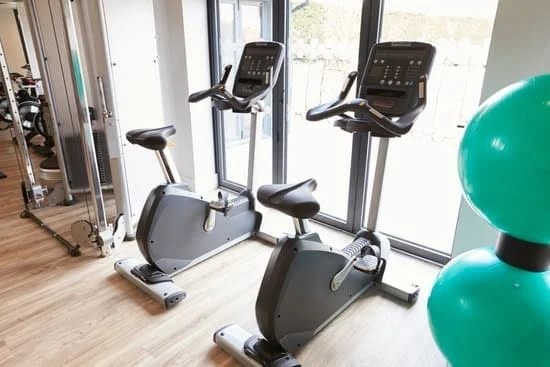It’s a valid question, considering the common challenges and obstacles that come with maintaining a healthy lifestyle as we age. From physical limitations to busy schedules, there are many factors that can impact one’s motivation to prioritize fitness.
As we enter the second half of our lives, it is essential to recognize the significance of staying active and taking care of our bodies. Not only does fitness contribute to overall well-being, but it also plays a critical role in preventing chronic illnesses and maintaining independence as we age. However, finding the motivation to embark on this journey can be daunting for many individuals.
In this article, we will explore practical tips and strategies for finding the inspiration to get fit at 50. From setting realistic goals and identifying personal motivations to embracing a healthy lifestyle and overcoming mental barriers, we will delve into various aspects of prioritizing health and fitness in this significant stage of life.
Whether you are just beginning your fitness journey or looking for ways to reignite your motivation, the following sections will provide valuable insights for achieving your fitness goals at 50 and beyond.
Setting Realistic Goals
As individuals reach the age of 50, the importance of staying fit and healthy becomes even more vital. However, many people in this age group may struggle with finding the motivation to get fit. Setting realistic fitness goals is a crucial step in overcoming this challenge and taking control of one’s health. But how do I find motivation to get fit at 50? By setting achievable goals and taking proactive steps towards a healthier lifestyle.
Emphasizing Achievable Fitness Goals
It’s essential to set realistic and attainable fitness goals as we age. Instead of aiming for drastic weight loss or extreme physical transformations, consider focusing on small, sustainable changes that can be incorporated into your daily routine. This can include activities such as walking for 30 minutes a day, increasing daily water intake, or cutting down on processed foods. By setting achievable goals, individuals are more likely to stay motivated and committed to their fitness journey.
Tips for Setting Realistic Goals
When it comes to exercise and diet, it’s important to start with manageable objectives. For instance, setting a goal to engage in moderate aerobic exercise for at least 150 minutes per week can be more sustainable than committing to rigorous workout routines right away.
Similarly, making gradual dietary changes such as increasing vegetable consumption or reducing added sugars can lead to long-term success. By breaking down larger fitness aspirations into smaller, actionable steps, individuals can build confidence and momentum in their pursuit of a healthier lifestyle.
Building Consistency Through Realistic Goals
Setting achievable fitness goals also lays the foundation for consistency. By incorporating manageable habits into one’s daily routine, individuals can establish a sustainable pattern of healthy living that extends beyond temporary motivation spikes. Whether it’s scheduling regular workouts, meal prepping nutritious meals, or prioritizing adequate sleep, consistent effort towards realistic goals is key in maintaining long-term fitness motivation at the age of 50 and beyond.
By focusing on setting achievable fitness goals and taking gradual steps towards healthy living, individuals can find the motivation needed to embark on their fitness journey at the age of 50. It’s about embracing small changes that lead to lasting improvements in overall health and well-being.
Finding Your Why
When it comes to finding motivation to get fit at 50, identifying your personal “why” is crucial. Understanding the reasons behind your desire to prioritize health and fitness can significantly impact your motivation and commitment to achieving your goals. Here are some tips for uncovering your why:
1. Reflect on Your Values: Take some time to reflect on what matters most to you in life. Consider how staying fit and healthy aligns with your values and priorities. Whether it’s the desire to maintain an active lifestyle, be present for your family, or simply feel better overall, connecting your fitness goals to your values can provide a powerful source of motivation.
2. Set Meaningful Goals: Think about what you hope to achieve by improving your fitness at 50. Whether it’s increasing mobility, reducing the risk of certain health conditions, or simply feeling more confident in your body, setting meaningful and specific goals can give you a clear sense of purpose and direction in your fitness journey.
3. Consider Your Long-Term Wellbeing: As we age, taking proactive steps to maintain our health becomes increasingly important. Think about the long-term benefits of staying fit at 50, such as increased energy levels, improved mental clarity, and a higher quality of life overall. By focusing on the positive impact that prioritizing fitness can have on your future wellbeing, you may find renewed motivation to commit to a healthier lifestyle.
By delving into these different aspects of finding your why, you can cultivate a deeper sense of purpose and drive when it comes to getting fit at 50. Ultimately, understanding and connecting with your personal motivations will empower you to stay committed to reaching your fitness goals despite any obstacles or challenges along the way.
Embracing a Healthy Lifestyle
As individuals reach the age of 50, prioritizing a healthy lifestyle becomes increasingly important. However, many may struggle with finding the motivation to make necessary changes in their daily routines. The question of “how do I find motivation to get fit at 50” is a common one, and it’s essential to recognize that embracing a healthy lifestyle is not just about physical fitness, but also about overall well-being.
To begin the journey towards a healthier lifestyle at 50, it’s crucial to prioritize gradual changes. One effective strategy is to start by incorporating small adjustments into daily routines, such as adding more fruits and vegetables to meals, drinking an extra glass of water each day, or taking short walks during breaks. These simple steps can eventually lead to significant improvements in overall health and wellness.
In addition to making gradual changes, integrating regular exercise into daily life is key to embracing a healthy lifestyle at 50. This can involve finding enjoyable physical activities that suit individual preferences and capabilities.
Whether it’s walking, swimming, yoga, or strength training, the goal is to find an exercise routine that promotes flexibility, cardiovascular health, and muscle strength. By making exercise a regular part of life, individuals can experience numerous benefits such as increased energy levels, improved mood, better sleep quality, and enhanced overall physical health.
Practical Tips for Embracing a Healthy Lifestyle
- Start small: Incorporate gradual changes into your daily routine
- Find enjoyable activities: Explore different forms of exercise to find what suits you best
- Prioritize consistency: Make exercise and healthy eating a regular part of your daily life
Overcoming Mental Barriers
Finding the motivation to get fit at 50 can be challenging, especially when faced with mental barriers and self-doubt. It’s important to recognize and address these obstacles in order to stay focused on fitness goals.
One common mental barrier is the fear of failure or the belief that it’s too late to make significant changes to one’s health. However, it’s essential to understand that it’s never too late to start prioritizing fitness and well-being.
One strategy for overcoming mental barriers is to shift your mindset towards a more positive and empowering outlook. Instead of focusing on past failures or perceived limitations, concentrate on the opportunities for growth and improvement that come with embracing a healthier lifestyle at 50. By reframing negative thoughts and self-limiting beliefs, individuals can cultivate a more optimistic and motivated mindset.
In addition, finding support from like-minded individuals can be instrumental in overcoming mental barriers. Whether it’s joining a fitness group, seeking out an accountability partner, or simply engaging with friends who share similar health goals, having a strong support system can help combat self-doubt and provide encouragement during moments of low motivation.
| Overcoming Mental Barriers | Data |
|---|---|
| Facing mental obstacles | It can be challenging to find the motivation to get fit at 50 due to mental barriers such as fear of failure or perceived limitations |
| Shifting mindset | Individuals need to shift their mindset towards positivity and empowerment in order to overcome these mental barriers |
| Finding support | Having a strong support system is crucial for overcoming self-doubt and maintaining motivation when pursuing fitness goals |
Exploring Different Exercise Options
As individuals reach the age of 50, it becomes increasingly important to adopt a regular exercise routine that promotes overall health and well-being. Many people in this age group may wonder, “How do I find motivation to get fit at 50?” The key lies in exploring various exercise options that are suitable for this stage of life. From low-impact activities to strength training, there are numerous ways to stay active and improve fitness levels.
One excellent option for those over 50 is low-impact exercises such as walking, swimming, or cycling. These activities are gentle on the joints while still providing cardiovascular benefits and promoting endurance. Additionally, incorporating yoga or tai chi into a fitness routine can help improve flexibility and balance, which becomes increasingly important with age.
Strength training is another crucial component of exercising at the age of 50 and beyond. Building muscle strength can help support bone health, prevent injury, and enhance overall mobility. Incorporating resistance bands or light weights into a workout regimen can be an effective way to engage in strength training without putting excessive strain on the body.
It’s important for individuals over 50 to consult with a healthcare professional or fitness expert before starting any new exercise regimen. This will ensure that the chosen activities are appropriate for their current fitness level and any underlying health conditions they may have. By exploring different exercise options and finding enjoyable activities that promote physical well-being, individuals can discover the motivation to prioritize their health and fitness at 50.
| Exercise Option | Benefits |
|---|---|
| Low-Impact Exercises (e.g. walking, swimming) | Gentle on joints while providing cardiovascular benefits |
| Strength Training (e.g. resistance bands, light weights) | Supports bone health, prevents injury, enhances mobility |
Seeking Support and Accountability
Importance of a Support System
As we age, finding the motivation to get fit at 50 can be challenging, especially when faced with various responsibilities and commitments. This is where having a support system becomes crucial.
Whether it’s friends, family members, or fellow fitness enthusiasts, having people who can encourage and motivate you can make a significant difference in your fitness journey. Surrounding yourself with individuals who understand and support your goals can help you stay on track and overcome any obstacles that may arise.
Finding an Accountability Partner
One effective way to stay motivated in your fitness journey is by finding an accountability partner. This could be someone who shares similar fitness goals or is committed to living a healthy lifestyle. By checking in with each other regularly, setting workout dates, or even participating in challenges together, you can hold each other accountable and provide the necessary encouragement when motivation wanes.
Joining Fitness Communities
In addition to individual support, joining a fitness community or group can also provide the accountability and motivation needed to stay committed to your fitness goals. Whether it’s a local running club, yoga group, or online community, connecting with like-minded individuals can foster a sense of camaraderie and support. It also offers opportunities to learn from others’ experiences and gain valuable insights to keep you motivated on your fitness journey.
By seeking support and accountability from others, individuals over 50 can find the motivation they need to prioritize their health and embrace an active lifestyle. With the right encouragement and companionship, staying fit at 50 becomes not only achievable but also enjoyable.
Celebrating Progress and Staying Consistent
In conclusion, finding the motivation to get fit at 50 may seem like a daunting task, but it is certainly achievable with the right mindset and approach. Setting realistic goals, identifying personal motivations, embracing a healthy lifestyle, and overcoming mental barriers are all essential elements in this journey. It’s important to celebrate progress along the way and stay consistent with exercise and healthy habits for long-term success.
One of the key factors in staying motivated is acknowledging and celebrating small victories. Whether it’s reaching a fitness milestone, making healthier food choices, or feeling more energized, recognizing these achievements can provide the necessary encouragement to continue on the path towards better health. By focusing on progress rather than perfection, individuals can maintain a positive outlook and stay committed to their fitness goals.
Consistency is also crucial in maintaining a healthy lifestyle. Finding an exercise routine that works well and making gradual changes to incorporate healthy habits into daily life can contribute to long-term success. Additionally, seeking support from friends, family, or fitness communities can provide accountability and encouragement when motivation wanes. Ultimately, prioritizing one’s health at 50 requires dedication, perseverance, and a willingness to embrace change – but the rewards of improved well-being make it all worthwhile.
Frequently Asked Questions
Is 50 Too Late to Get in Shape?
Being 50 is definitely not too late to get in shape. It’s never too late to start prioritizing your health and fitness. With the right approach, dedication, and consistency, significant improvements can be made at this age.
Can You Get Really Fit After 50?
Yes, it is entirely possible to get really fit after 50. It may require a different approach compared to when you were younger, but with proper training, nutrition, and mindset, remarkable improvements in strength, cardiovascular fitness, flexibility and overall health are achievable.
How Can I Get Motivated to Exercise at 50?
Getting motivated to exercise at 50 may require a shift in perspective. Instead of focusing on aesthetics or performance goals, prioritize the numerous health benefits that regular exercise provides, such as increased energy levels, improved mood and cognition, better overall health outcomes and enhanced quality of life. Additionally, finding an enjoyable form of physical activity can increase motivation and adherence.

Passionate about providing useful information to anyone with an interest in the field of Personal Training, I strive to pass on to our readers quality information and to answer any questions about Personal Trainers, the work they do and how to become one.





